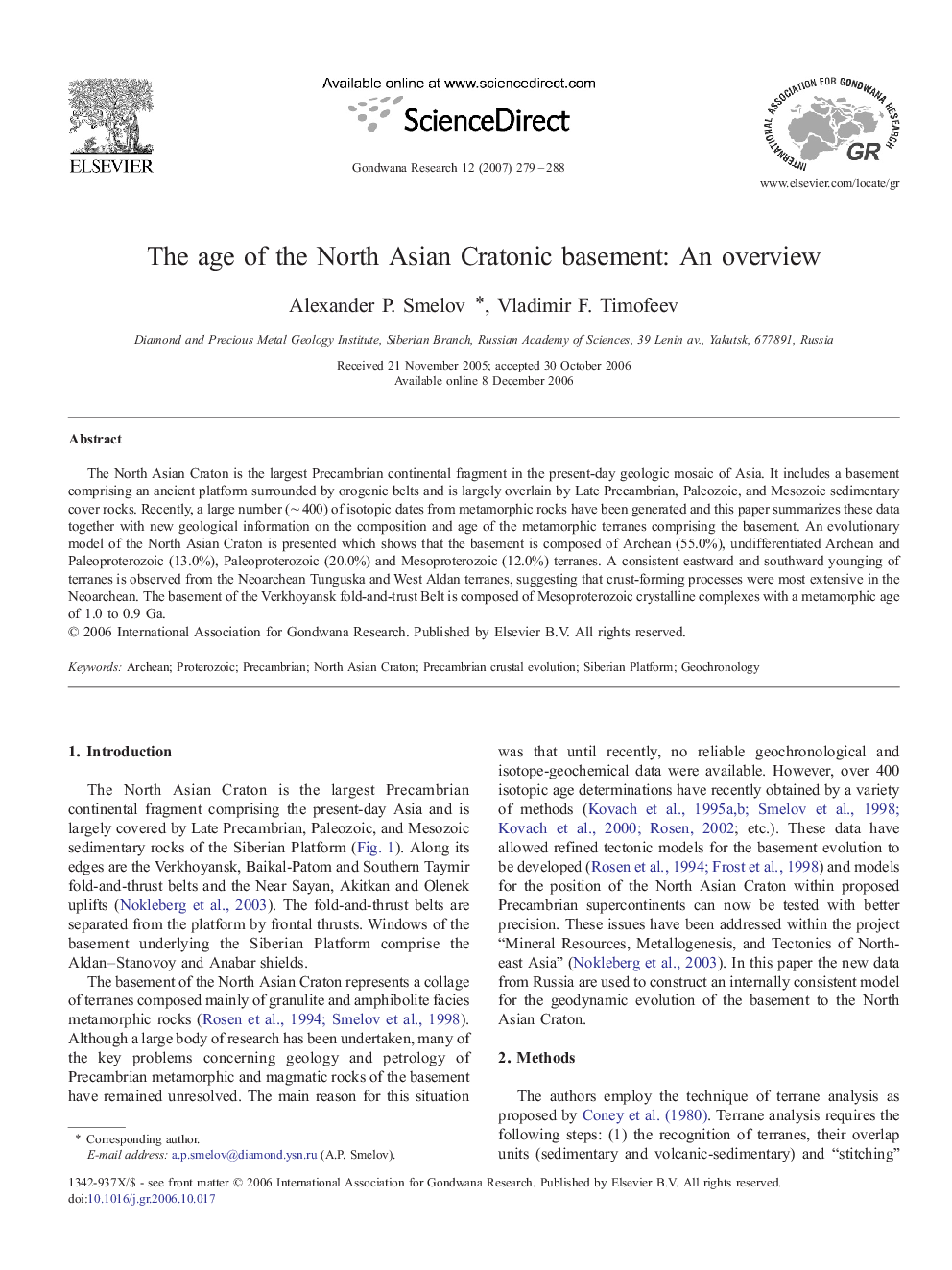| Article ID | Journal | Published Year | Pages | File Type |
|---|---|---|---|---|
| 4727731 | Gondwana Research | 2007 | 10 Pages |
The North Asian Craton is the largest Precambrian continental fragment in the present-day geologic mosaic of Asia. It includes a basement comprising an ancient platform surrounded by orogenic belts and is largely overlain by Late Precambrian, Paleozoic, and Mesozoic sedimentary cover rocks. Recently, a large number (∼ 400) of isotopic dates from metamorphic rocks have been generated and this paper summarizes these data together with new geological information on the composition and age of the metamorphic terranes comprising the basement. An evolutionary model of the North Asian Craton is presented which shows that the basement is composed of Archean (55.0%), undifferentiated Archean and Paleoproterozoic (13.0%), Paleoproterozoic (20.0%) and Mesoproterozoic (12.0%) terranes. A consistent eastward and southward younging of terranes is observed from the Neoarchean Tunguska and West Aldan terranes, suggesting that crust-forming processes were most extensive in the Neoarchean. The basement of the Verkhoyansk fold-and-trust Belt is composed of Mesoproterozoic crystalline complexes with a metamorphic age of 1.0 to 0.9 Ga.
